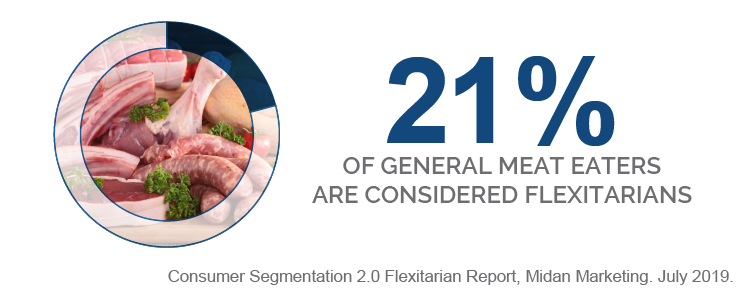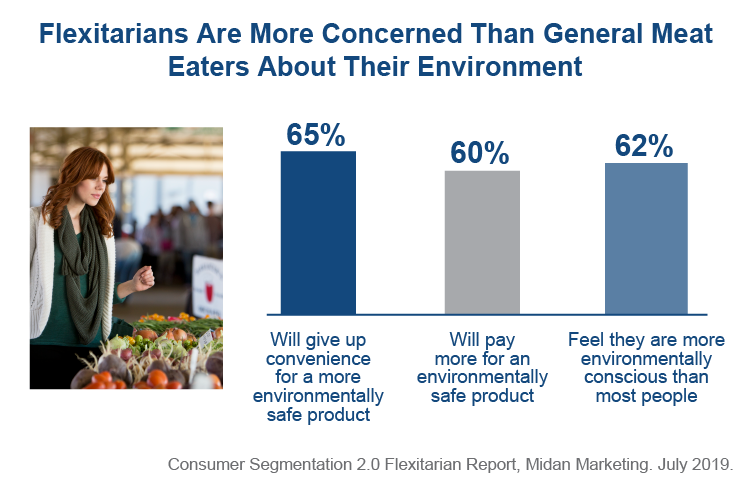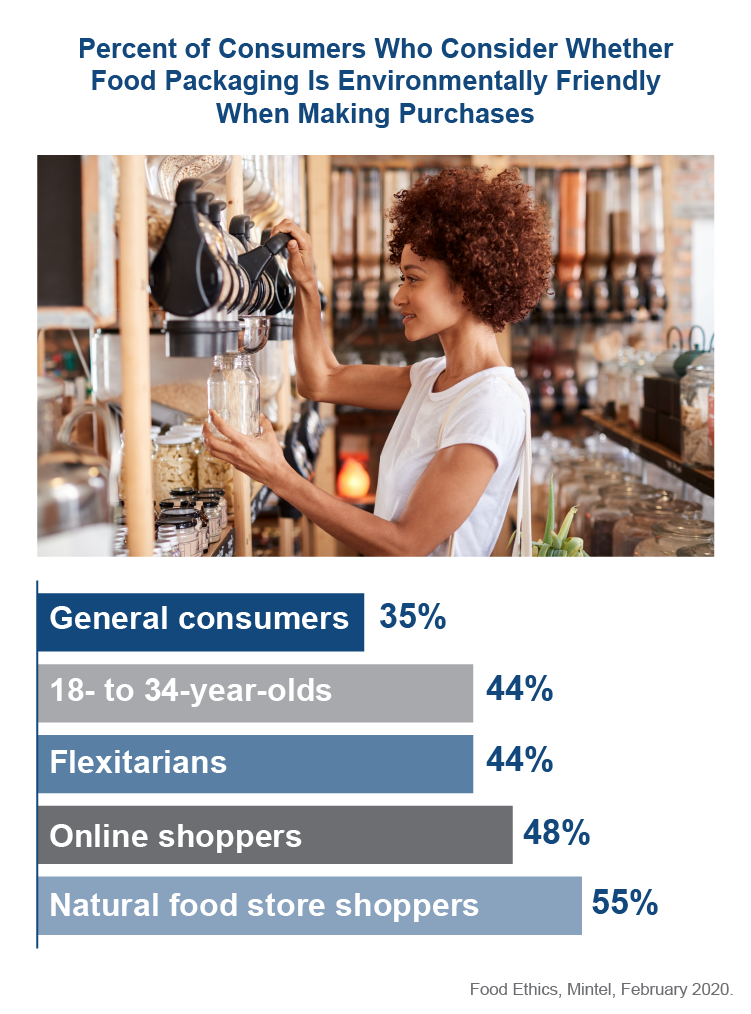Changing attitudes have also given rise to several new meat consumer segments including those known as Flexitarians. Flexitarians represent about one-fifth of meat eaters and are comprised of those who actively replace meat and poultry with vegetable- and plant-based proteins as a main dish daily or several times a week. Compared to the general meat eater, Flexitarians express more concerns about their health and the environment, see themselves as extremely environmentally conscious and are willing to pay more for environmentally safe products.1

Retailers are already merchandising blended protein products to attract Flexitarians. Since this is a new category, sales data is limited, but the information we have is promising. According to recent IRI data, there has been a 73% increase in the number of branded protein-blend products sold in the last year.4
How fast is the category growing? IRI currently tracks 19 products considered protein blends — eight of those products weren’t even on the market a year ago. Due to the small starting base and the high volume of SKUs introduced, beef blends have seen a 1,416% dollar sales growth — unit sales have grown even more at 2,318% since last year. This growth has caused a significant price drop from an average of $9.24 to $5.79 per unit (-37%), bringing the price in line with traditional ground beef.4

Brands are also changing their packaging to make these new blended products more attractive to Flexitarian shoppers at the meat case. “The demand for fresh meat alternatives has recently skyrocketed as consumers grow more health and socially conscious,” explained Monty Kayes, Director of New Business Development, Sealed Air. “As a result, we have also seen a spike in the demand for alternative packaging formats.” Some of these alternative packaging formats, like CRYOVAC® Brand plant-based rollstock, use less traditional plastic and give processors the protection they need while offering health and environmentally conscious Flexitarians the sustainability they demand.



2 Consumer Approach to Nutrition, Mintel. January 2020.
3 Better for you Eating Trends, Mintel. November 2019.
4 IRI, MULO, 52 weeks ending 5/10/20.
5 The James Beard Foundation, https://www.jamesbeard.org/blendedburgerproject
6 Food Ethics, Mintel, February 2020.
This content originally appeared in The Shelby Report.
Get additional COVID-19 Insights here
